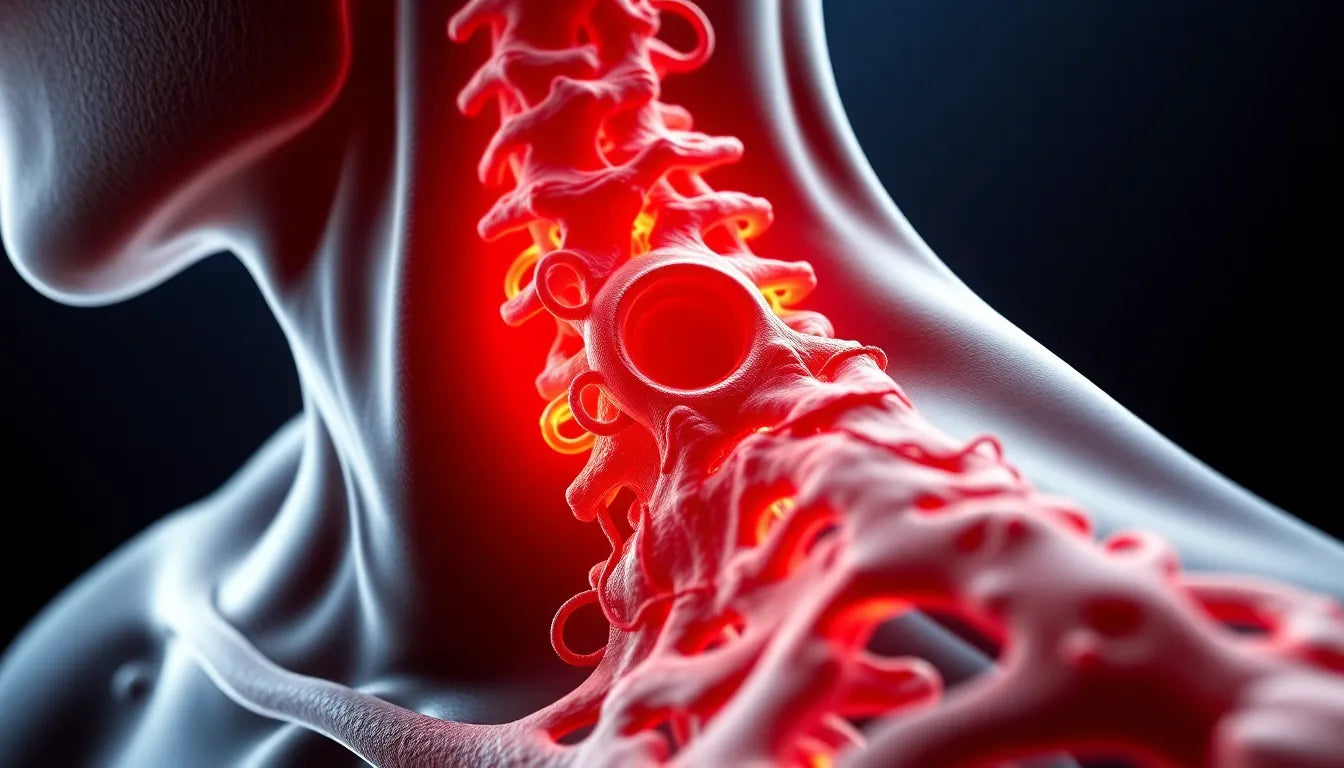Living with lumbago with sciatica can be a challenging experience, as it involves not only persistent lower back pain but also radiating discomfort that travels down the leg, following the path of the sciatic nerve. This condition is surprisingly common, affecting a significant portion of the population and often impacting daily activities and mobility. Understanding the nature and causes of lumbago with sciatica is the first step towards managing its effects and regaining control over your life.
understanding lumbago with sciatica
Lumbago with sciatica occurs when nerve compression in the lower back leads to pain that extends from the back through the buttock and down the leg. This nerve compression is frequently the result of herniated discs, spinal stenosis, or degenerative changes in the spine. These issues can arise from various factors, including poor posture, heavy lifting, or simply the natural aging process. The prevalence of this condition underscores the importance of awareness and proactive management.
the importance of addressing the issue
Ignoring the symptoms of lumbago with sciatica can lead to chronic pain and even disability, significantly affecting quality of life. Early intervention is crucial to prevent the condition from worsening. By addressing the problem promptly through a comprehensive management plan, individuals can reduce pain, improve mobility, and prevent future occurrences. The benefits of early and effective treatment extend beyond physical relief, contributing to overall well-being and daily function.
imagine a life free from pain
Imagine waking up each day without the burden of pain dictating your activities. Consider how a pain-free existence could transform your daily routine, allowing you to engage more fully with the world around you. This vision is not just a dream but a realistic goal with the right approach to managing lumbago with sciatica. By understanding the condition and taking proactive steps, you can pave the way to a healthier, more active life.
recognizing symptoms and getting the right diagnosis
Understanding the symptoms of lumbago with sciatica is crucial for seeking timely treatment. Typically, individuals experience a sharp, shooting pain that originates in the lower back and travels through the buttock down the leg. This pain is often accompanied by numbness or weakness along the sciatic nerve pathway, making everyday activities challenging. To accurately diagnose this condition, healthcare providers often rely on a combination of physical examinations and imaging tests, such as MRI or CT scans. These diagnostic tools help identify the underlying causes, such as herniated discs or spinal stenosis, allowing for a tailored treatment plan.
conservative treatment approaches
Addressing lumbago with sciatica often begins with conservative treatments aimed at managing pain and improving mobility. Over-the-counter pain relievers, like ibuprofen and acetaminophen, can provide temporary relief. Additionally, alternating between ice and heat therapy can help reduce inflammation and soothe sore muscles. It's essential to follow guidelines for effective use, such as applying ice packs for 15-20 minutes every few hours during the acute phase of pain, followed by heat therapy to relax muscles.
importance of physical activity and therapy
While rest might seem like the best remedy, staying active is crucial for recovery. Prolonged inactivity can exacerbate symptoms, whereas regular physical activity helps maintain flexibility and strength. Engaging in core strengthening and stretching exercises can alleviate pressure on the sciatic nerve and enhance spinal support. Physical therapy serves as a cornerstone of treatment, offering personalized exercise regimens and techniques to improve posture and movement patterns, ultimately reducing pain and preventing future episodes.
exploring alternative therapies
Beyond conventional treatments, alternative therapies offer additional avenues for relief. Chiropractic care, acupuncture, and yoga have gained popularity as complementary options for managing lumbago with sciatica. These therapies focus on holistic approaches to pain management, often emphasizing alignment, energy flow, and relaxation. While research on their efficacy varies, many patients report significant improvements in symptoms, making these therapies worth considering as part of a comprehensive treatment plan.
when to consider interventional treatments
For some individuals, conservative measures may not provide sufficient relief, necessitating a progression to interventional treatments. Prescription medications, such as muscle relaxants, antidepressants, or opioids, may be considered for severe or persistent pain. However, these should be used cautiously and under medical supervision due to potential side effects and dependency risks.
In cases where nerve compression causes significant disability, spinal injections, such as epidural steroid injections, can offer targeted relief by reducing inflammation around the affected nerves. Surgery, although typically a last resort, may be necessary for patients with persistent nerve compression and significant symptoms. Surgical options like microdiscectomy or laminectomy aim to relieve pressure on the sciatic nerve, providing long-term relief and improved function.
long-term management and prevention strategies
Effectively managing lumbago with sciatica requires a focus on long-term strategies to prevent recurrence. One of the most effective ways to achieve this is by incorporating regular exercise into your routine. Engaging in activities that strengthen core muscles can provide better support for the spine, reducing the risk of future episodes. Additionally, maintaining a healthy weight is crucial, as excess body weight can place additional stress on the lower back and sciatic nerve.
Posture plays a significant role in managing this condition. Practicing good posture while sitting, standing, and lifting can help minimize stress on the spine. Simple ergonomic adjustments, such as using a supportive chair or ensuring your computer screen is at eye level, can make a substantial difference in your comfort and spinal health.
ergonomic solutions for daily life
Implementing ergonomic solutions in your daily routine can greatly alleviate the discomfort associated with lumbago with sciatica. Setting up an ergonomic workstation is a practical step towards reducing strain on your lower back. Ensure that your chair provides adequate lumbar support, and that your feet are flat on the ground or on a footrest. Your keyboard and mouse should be within easy reach to avoid unnecessary twisting or stretching.
Incorporating regular movement into your day is equally important. Simple strategies like taking short breaks to stand and stretch can help keep your back muscles active and reduce tension. Consider using a sit-stand desk to alternate between sitting and standing throughout the day, promoting better circulation and reducing pressure on the lower back.
conclusion
Managing lumbago with sciatica effectively involves a comprehensive approach that combines immediate relief with long-term prevention strategies. By understanding the condition and exploring various treatment options, from conservative measures to ergonomic adjustments, individuals can find a path to pain-free living. It's essential to remain proactive in managing symptoms and preventing recurrence, ultimately improving your quality of life.
frequently asked questions
How is lumbago with sciatica different from regular back pain?
Lumbago with sciatica differs from regular back pain primarily due to the involvement of the sciatic nerve. While lumbago refers to lower back pain, sciatica involves radiating leg pain that follows the path of the sciatic nerve, often accompanied by numbness or weakness.
What exercises help with sciatica?
Exercises that focus on stretching and strengthening the core muscles are beneficial for sciatica. Specific stretches such as the piriformis stretch, hamstring stretch, and gentle yoga poses can help relieve pressure on the sciatic nerve. Core strengthening exercises like planks and bridges provide additional support to the spine.
When is surgery necessary for sciatica?
Surgery for sciatica is typically considered when conservative treatments fail to provide relief, especially if there is persistent nerve compression causing significant symptoms or disability. Surgical options like microdiscectomy or laminectomy aim to relieve pressure on the sciatic nerve.
Can ergonomic aids help with sciatica?
Yes, ergonomic aids can significantly help with sciatica by reducing pressure on the spine and promoting better posture. Ergonomic chairs, sit-stand desks, and supportive cushions are examples of tools that can alleviate discomfort and prevent strain on the lower back.
How long does recovery from lumbago with sciatica typically take?
The recovery timeline for lumbago with sciatica varies depending on the severity of the condition and the treatment approach. With conservative treatment, many individuals experience improvement within a few weeks to a few months. Factors such as adherence to exercise routines and ergonomic adjustments can influence healing time.
Sources
- Verywell Health. (n.d.). "Lumbago with Sciatica Treatment."
- HealthCentral. (n.d.). "Lumbago with Sciatica: Symptoms and Treatment."
- Cleveland Clinic. (n.d.). "Sciatica."
- Mayo Clinic. (n.d.). "Sciatica: Symptoms and Causes."
- Royal Spine Surgery. (n.d.). "Lumbago with Sciatica: Treatment Options."
- PMC/BMJ Review Article. (n.d.). "Comparison of Conservative and Surgical Treatments for Sciatica."


















